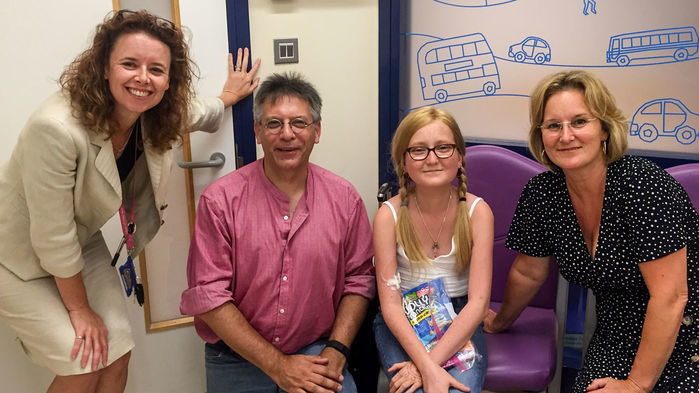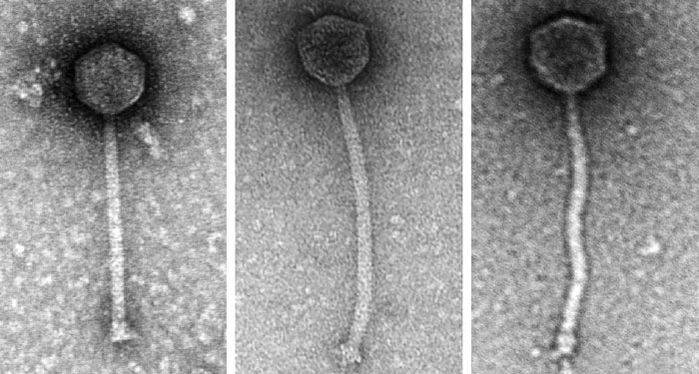
With the standard treatments failing, Isabelle's mother asked Spencer about alternatives-adding that she had read something about using viruses to kill bacteria. Spencer decided to take a gamble on what seemed like a far-fetched idea: phages, viruses that can destroy bacteria and have a long-if checkered-history as medical treatments. She collaborated with leading phage researchers, who concocted a cocktail of the first genetically engineered phages ever used as a treatment-and the first directed at a Mycobacterium, a genus that includes tuberculosis (TB). After 6 months of the tailor-made phage infusions, Isabelle's wounds healed and her condition improved with no serious side effects, the authors report today in Nature Medicine.
"This is a convincing proof of concept, even though it's just a single case study," says infectious disease researcher Eric Rubin of the Harvard T.H. Chan School of Public Health in Boston. But, he adds, "This needs to be tested rigorously with a real clinical trial."
Phage therapy dates back a century, but until recently the idea was relegated to fringe medicine in most countries, mainly because of the advent of antibiotics. Unlike broad-spectrum antibiotics, individual phages typically kill a single bacterial strain, which means a treatment that works against one person's infection might fail in another person infected with a variant of the same bacterium. Phages can also be toxic. But a string of recent successes against antibiotic-resistant bacteria have revived interest in the idea, leading major U.S. universities to launch phage research centers. Drug-resistant TB strains are an especially tempting target for phage therapy.
M. abscessus and other bacteria often colonize the thick mucus that builds up in the lungs of people with cystic fibrosis, a genetic disease that afflicts some 80,000 people worldwide. The infections can lead to severe lung damage, for which a transplant is a last resort. Isabelle, for example, had lost two-thirds of her lung function. But her infection persisted after the transplant, threatening her life.
To help Isabelle, Spencer's team contacted phage researcher Graham Hatfull of the University of Pittsburgh in Pennsylvania. Hatfull and his team curate a collection of more than 15,000 phages, one of the world's largest, many found by undergraduates at more than 150 schools who take part in an educational phage hunting effort. Hatfull and his team spent 3 months searching for phages that could kill M. abscessus isolated from Isabelle's wounds and sputum. They found three.
Hatfull's group wanted to combine the phages into a cocktail to reduce the chances of M. abscessus developing resistance, but there was a catch. Two of the three are so-called temperate phages, which have repressor genes that limit their lethality. To turn those two into reliable bacteria killers, Hatfull removed the repressor genes with a gene-editing technique his lab developed to study phage genetics.
Isabelle first received an infusion of the phage cocktail in June 2018. Within 72 hours, her sores began to dry. After 6 weeks of intravenous treatment every 12 hours, the infection was all but gone. Traces remain, however, so she still receives infusions twice a day and applies the treatment directly to her remaining lesions. But she lives a more normal teen life, attending school, shopping with friends, and taking driving lessons. "We are optimistic that in time it can completely clear the infection," Spencer says.
Spencer, Hatfull, and co-authors stress that Isabelle might have improved without phage therapy. They also note that her tailor-made cocktail doesn't work against other M. abscessus isolates they have tested. Still, the apparent success has encouraged phage researchers. Other phages in Hatfull's library infect and kill M. tuberculosis in test tubes, and he thinks they might prove useful weapons against drug-resistant strains.
But William Jacobs, a TB specialist at Albert Einstein College of Medicine in New York City, has tested those phages in a mouse TB model and seen no effect. "TB lives inside cells and I don't think the phages are able to get inside," Jacobs says. (M. abscessus primarily lives outside cells.) Others say there could be ways to ferry phages into the infected cells.
Phage therapy companies have at least three trials underway to rigorously assess the worth of their potential products for several different bacterial infections. Even if the treatments succeed, they face tall practical hurdles, says Madhukar Pai, an epidemiologist at McGill University in Montreal, Canada. "For this to become a real world therapy we need to find out if we can do this with less effort and cost."
doi:10.1126/science.aax9709




Comment: See also:
- Antibiotic-Resistant superbugs are getting deadlier - viruses may be a solution
- Genetic havoc: New Gene-Editing Report highlights risks to human health and our environment
- Horizontal gene transfer: The surprising trick bacteria uses to render drugs useless
- Herbicides cause bacteria to develop antibiotic resistance 100,000 times faster
Also check out SOTT radio's: